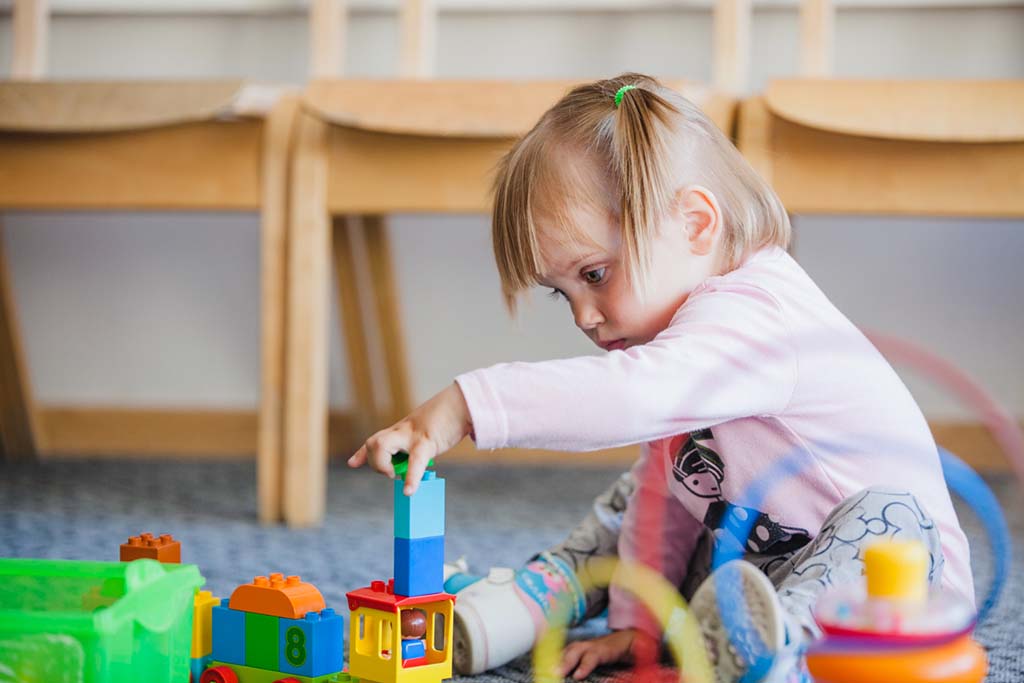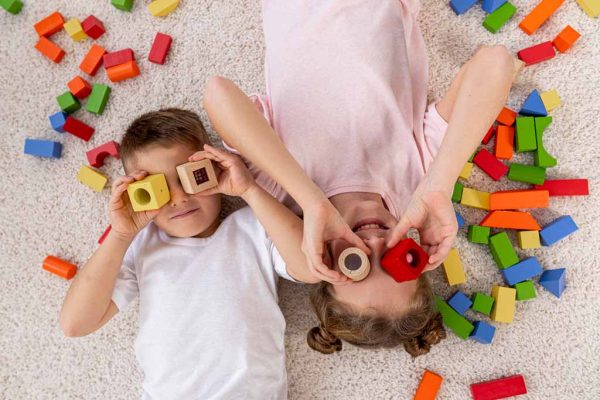Language
Keep in mind that you can use almost anything as an opportunity to learn vocabulary, nesting/stacking toys are no exception. Let the kids knock the pieces over or better yet, dump them out of the container. They’ll enjoy the chaos!
Use the different pieces to work on comparisons. Put the smallest and the largest pieces next to each other to teach small, big and bigger.
Prepositions: Use this as an opportunity to work on colors/matching, top/bottom, counting, etc.
Work on turn-taking skills by letting the child stack a piece, then you, and so forth. Or tell them a particular order to stack them in to work on following directions.
Gross Motor, Core Control & Balance
At around 6 months, infants gain the postural stability to be able to sit up.by Sitting up while stacking allows babies to get used to stabilizing their center core as they move about and use their hands.
This early multi-tasking activity also gives them the opportunity to let their body manage itself and make adjustments to maintain balance.
Fine Motor
There are many benefits of stacking and piling things. For young children, picking items up and putting them in place helps them learn the important skill of grasp and release, as well as how to control and position their fingers. Since infants don’t have the dexterity or fine motor control yet, they use their entire hands to explore, hold, release, and place objects.
This means that larger, chunky shapes are needed to start. Have your toddler start with the biggest pieces, progressing to the smaller pieces.
Visual And Spatial Perception
Stacking/nesting also works on depth perception, hand-eye coordination, and understanding where your body is in space. As you put each piece on top of the other, you have to visually gauge where to place each piece both in relation to yourself.
For younger children, nesting toys are easier to start with. Since the pieces lock into the other pieces, their design is easier. These sets require graded control and pressure as you balance pieces on top of each other so they don’t tumble.
Midline Crossing
Is the ability for the right hand to cross over the center of the body to function in the left hemisphere and the reverse. This is an important for handwriting, scissors, reading, eating, and anything that requires the hand to move from left to right or right to left.
To practice this skill, place all of the pieces on the left side of the body, next to the left hip. Have the child reach over with the right hand to grab a piece and then set it down either in front of them or to the right. Make sure that the child is using the right hand, without using the left hand.


